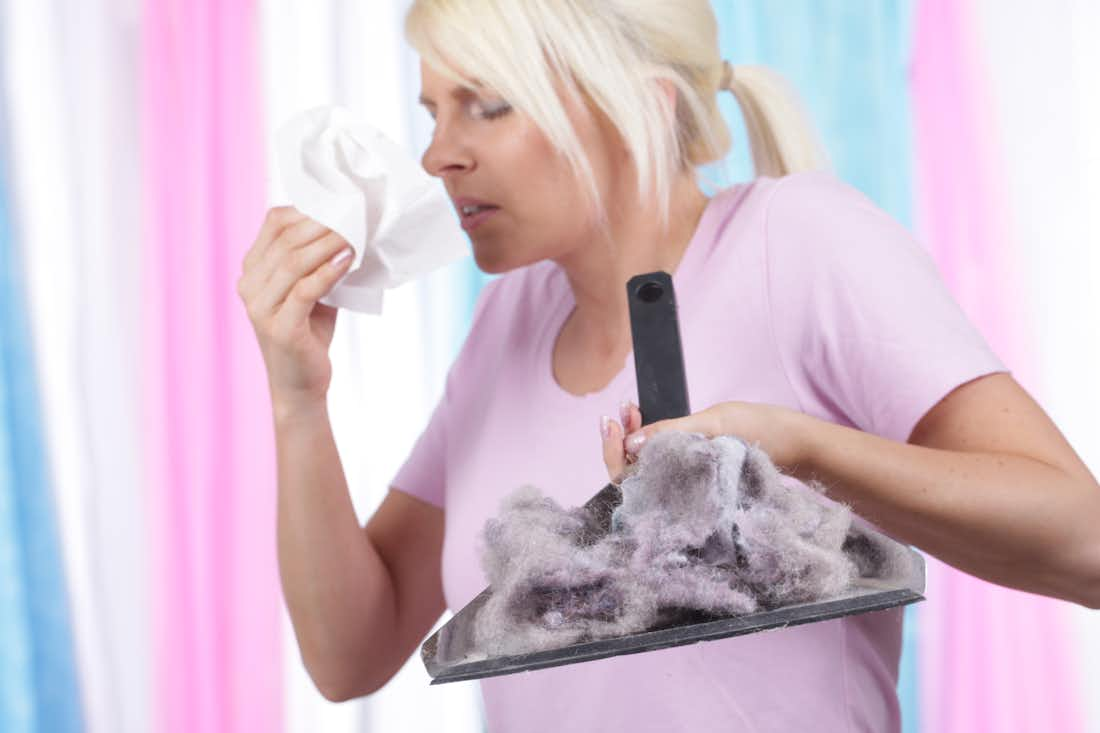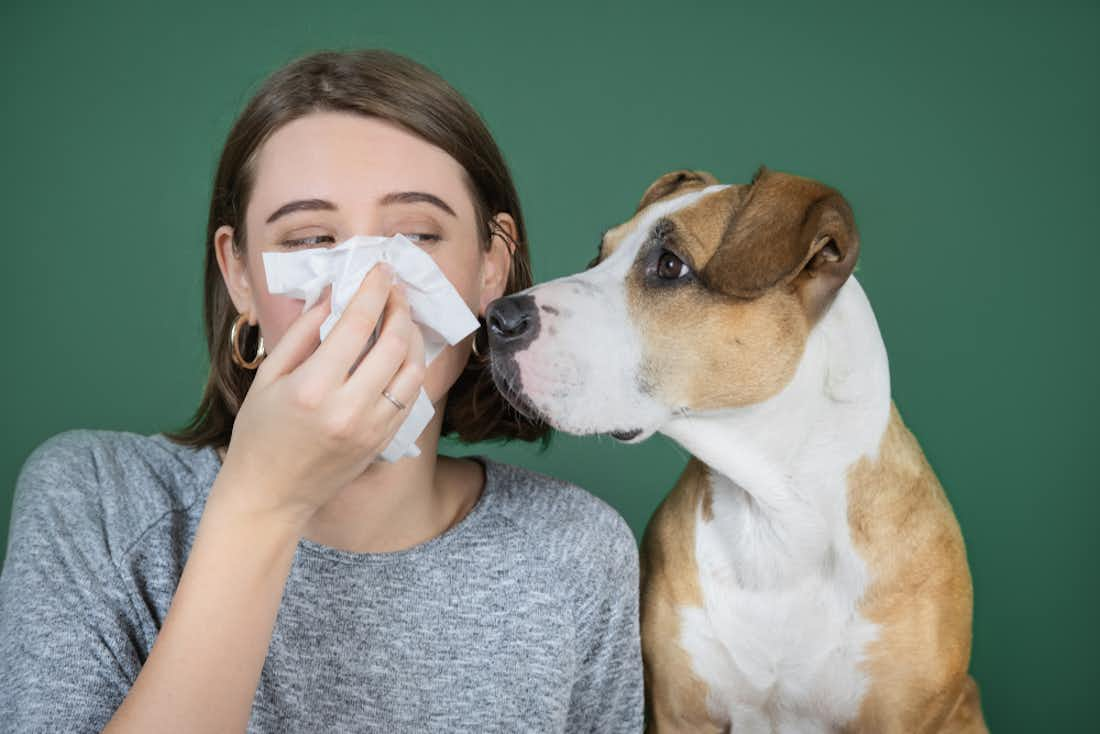Nov 4, 2021
How To Read Allergy Test Results
6 minute read
If seasonal allergies ruin an otherwise perfect day, you probably want to do nothing but sit around inside. But maybe your symptoms are getting even worse when you’re sitting on the couch.
The pollen gremlins aren’t somehow making their way inside. It might actually be that you’re allergic to something within your humble abode. And the only way to find out is by taking an allergy test.
Don’t worry -- no studying and cramming the night before is necessary. And you can even conduct a full allergy test right from home.
Let’s take a look at how these handy tools work, as well as how you can read them to learn all about your immune system’s response.
How The Test Works
If your allergy symptoms are becoming increasingly bothersome, you’ll probably want to take an allergy test. While you can take them at home, they are also commonly conducted by a professional allergist at an allergist’s office.
Commonly, healthcare providers will conduct an allergy test if you aren’t sure what’s causing allergic reactions like hives or asthma. Allergy tests can test for all sorts of different allergens, including:
- Trees
- Pet dander
- Dust mites
- Mold
- Pests
- Common ragweed
- Bee or Wasp stings
- Cockroaches
- Grasses
- Weeds
There are a few different types of allergy tests that each work in different ways.
Skin Prick (Scratch) Test
This is an allergy test that must be done inside an allergist’s office. Essentially, they’ll use a small needle and prick the skin with droplets of several potential allergens so that the liquid enters your skin.
Reactions such as raised rashes, round spots called “wheals,” or redness may occur if you’re allergic to certain substances. This test can check you for airborne allergies, food allergies, or penicillin allergies (reactions to the drug penicillin).
If the traditional scratch test is inconclusive, you may get an intradermal skin test in which a provider injects a small amount of the allergen into your epidermis or outer skin layer.
Blood Test
One of the most common methods of blood tests for allergy testing is the radioallergosorbent test (RAST).
With a blood test, a small amount of blood is sent over to a lab where it is exposed to allergens. Then, they measure the level of something called IgE antibodies, or immunoglobulin E. This is what your immune system produces in response to allergens.
Understanding the Results
When you get your results back, particularly from a blood test, you’ll see some stuff on there that doesn’t make too much sense. Let’s break it down.
Remember that IgE is what your immune system produces in response to individual allergens. Elevated levels of allergen-specific IgE indicate that you likely tested positive for the given trigger. For example, you probably have a ragweed allergy if you have high IgE levels in response to ragweed.
Negative results show that you probably don’t have a “true allergy” to the trigger, an IgE-mediated response to the allergens being tested.
Keep in mind that the amount of IgE found in response to an allergen only shows how likely you are to be allergic to that substance -- it doesn’t indicate the severity of the allergic reaction you might have. High levels of IgE in response to pollen may show that you’ll be easily affected by seasonal allergies, though your symptoms may be mild.
And if you have any questions, your allergist is always there to answer them.
Take-Home Test
When your teacher let you take home your chemistry test, it was always a good day. Well, you can now conduct your very own chemistry test right from home. And this is one that you can’t fail.
Cleared’s at-home allergy test lets you analyze for 40 different indoor and outdoor environmental triggers without the need for a trip to the allergists. But don’t worry -- professional allergists are still at your service to help you along the way.
Your at-home allergy test requires just a tiny prick for a huge amount of info. And it’s your first step towards a life that feels completely clear. Here’s how to conduct your at-home blood test.
You’ll register your blood collection card at getcleared.com/register-kit. Fill out the card with your personal info, and then prep your space.
Drink a glass of water, warm your hands under hot water, and then shake them at your sides. This gets your blood pumping and flowing so you can get a clear sample when it comes time for the little prick.
Find a nice spot on one of your ring fingers and clean it using the alcohol prep pad.
Twist off the top of the lancet to open it. Then, press down on your finger to puncture the skin. It’s a super tiny needle, we promise!
Drip a little blood into each circle of the blood collection card to fill and saturate. Squeeze your finger for more blood -- and try not to touch or tap the card. Make sure each circle is complete and saturated to the point where your blood soaks the back of the card.
And that’s all there is to it! We won’t call it painless, but we will say it’s a pain “few.” And once you’re all done, you’ll be able to find out so much more about how your body reacts to certain allergens that you never even knew existed.
Be Positive
While allergy tests are super effective, remember that false positives and false negatives are still possible. If you suspect that something is off with your results, make sure you contact your allergist to see if you can get it sorted out.
And if you do get a true positive, it’s not the end of the world! Understanding what you’re allergic to is essential for taking steps to fight back against them.
Antihistamines are popular medications that reduce the symptoms of allergies by inhibiting the production of histamines, a chemical that causes allergy symptoms. While antihistamines can be expensive, Cleared has them for extremely accessible prices to help bring you relief.
What’s more, we’ve got an FDA-approved option to pinpoint the underlying cause of allergies, rather than just the symptoms. SLIT, or sublingual immunotherapy, is a form of allergy immunotherapy in which you’re gradually exposed to allergies through small oral tablets. Over time, your body builds up an immunity, and those terrible triggers become no match.
Interested? Click here to start your free allergy consultation and get started today.
Passing the Test
Getting an allergy test is the best and easiest way to find out exactly what you’re allergic to. From skin prick tests to blood tests, you and your allergist can work together to find out exactly what’s bringing tears to your eyes and snot to your nose.
You can take a blood test with an at-home testing kit, and reading the results is even easier than it seems. Higher levels of IgE, or immunoglobulin E, indicate that you are more susceptible to an allergic reaction from a given substance. However, it doesn’t necessarily indicate the severity of the reaction.
The only way to fail an allergy test is to miss class. Don’t let unknown allergen triggers continue to get you down. Click here to get started with your at-home allergy test today.
Sources:
Allergy Testing: What It Is, Indications & Types | Cleveland Clinic



